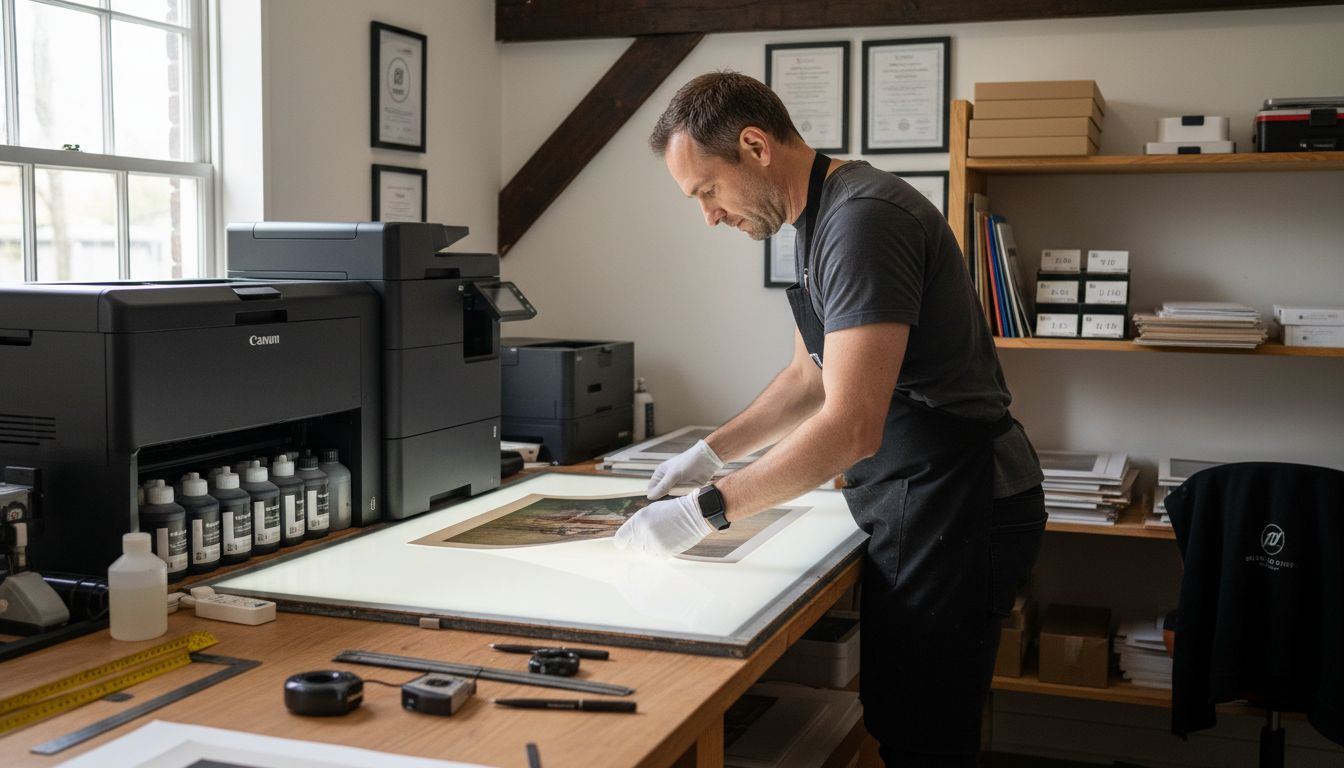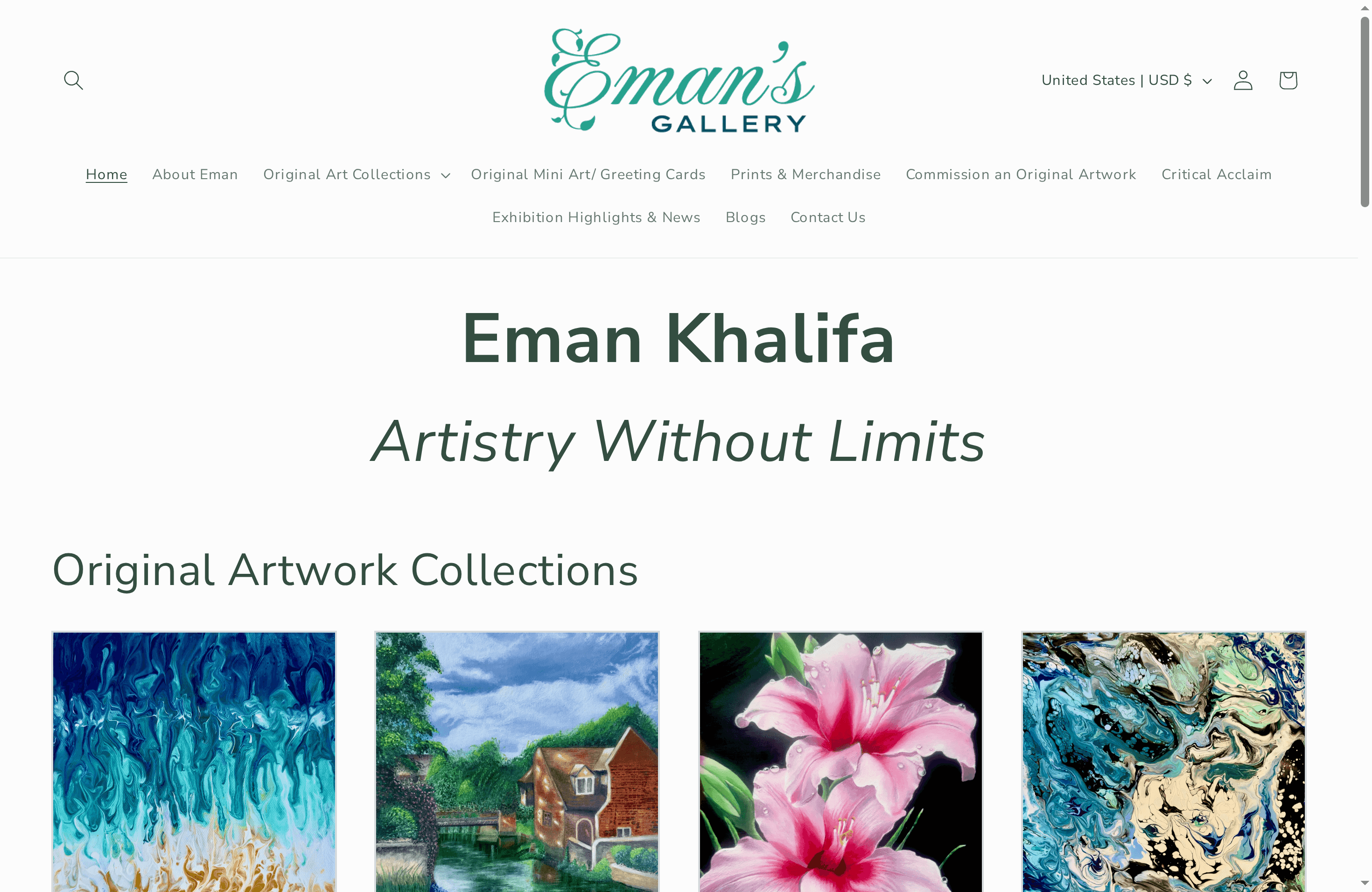
Why Invest in Artist Prints: Complete Guide
More than 50 percent of new art collectors start with artist prints before investing in originals. These unique reproductions let you access beautiful artwork at a fraction of the cost, yet myths about their value persist. Understanding what makes artist prints special can help you appreciate their craft, spot lasting quality, and discover smart ways to build your own collection.
Table of Contents
- Defining Artist Prints And Common Myths
- Types Of Artist Prints And Key Differences
- Benefits Of Investing In Artist Prints
- Factors Affecting Print Value And Costs
- Comparing Artist Prints To Original Art
Key Takeaways
| Point | Details |
|---|---|
| Understanding Artist Prints | Artist prints are high-quality reproductions of original artworks, created through specialized techniques that preserve artistic integrity and offer accessibility to collectors. |
| Investment Potential | Limited edition artist prints can appreciate in value over time, providing a more affordable entry point for collectors compared to original artworks. |
| Artistic Techniques | Various printing methods such as Giclée, lithography, and screen printing each contribute unique characteristics that enhance artistic reproduction. |
| Collectibility Factors | Factors such as edition size, artist reputation, and print condition play a crucial role in determining the value and collectibility of artist prints. |
Defining Artist Prints and Common Myths
Artist prints represent carefully crafted reproductions of original artwork, serving as accessible alternatives for art enthusiasts who appreciate unique visual expressions without purchasing original pieces. Unlike mass-produced posters, artist prints are typically created through specialized techniques that maintain artistic integrity and limited availability.
According to theprintspace, several distinct printing techniques define artist prints, including:
- Giclée Prints: High-quality digital reproductions using archival ink and professional printing processes
- Lithographs: Traditional prints created by drawing on limestone or metal plates
- Screen Prints: Artistic technique involving pushing ink through a mesh screen onto paper
- Etching Prints: Intricate designs created by cutting images into metal plates
Many people mistakenly believe artist prints are simple, low-value reproductions. However, zenmuseum explains that these prints are carefully crafted art forms with unique characteristics. Professional artists often personally supervise print production, ensuring each reproduction maintains the original artwork’s essence and quality.

The most significant myth surrounding artist prints is that they lack value or collectibility. In reality, limited edition prints can become valuable investments, especially when produced by renowned artists, signed, and numbered. Collectors appreciate prints for their accessibility, artistic technique, and potential appreciation over time. 7 Expert Tips for Collecting Limited Edition Prints Wisely provides deeper insights into navigating the world of print collecting.
Understanding the nuanced world of artist prints requires recognizing their artistic merit, technical complexity, and potential cultural significance. Whether you’re an emerging art collector or simply appreciate visual creativity, artist prints offer a fascinating gateway into the broader art ecosystem.
Types of Artist Prints and Key Differences
Artist prints encompass a diverse range of techniques, each offering unique visual characteristics and artistic expressions. theprintspace highlights several distinctive print types that artists utilize to create remarkable reproductions.
Primary Print Techniques
Giclée Prints
- High-resolution digital reproductions
- Uses archival-quality pigment inks
- Excellent color accuracy and detail preservation
- Ideal for contemporary art and photography
Lithographic Prints
- Traditional technique dating back to the late 18th century
- Created by drawing on limestone or metal plates
- Allows intricate details and smooth color transitions
- Historically significant in fine art printmaking
Screen Prints
- Also known as silkscreen printing
- Involves pushing ink through a mesh screen
- Enables bold, graphic designs with vibrant colors
- Popular in pop art and contemporary graphic design
According to zenmuseum, each print technique offers distinct advantages for artists seeking to reproduce their work. The choice of technique depends on the artist’s vision, desired aesthetic, and intended visual impact.
Understanding these differences is crucial for collectors and art enthusiasts.
While some prints are produced in large quantities, limited edition prints retain significant artistic and potential financial value. 7 Key Differences: Original Art vs Prints for Your Space provides additional insights into distinguishing between various print types and their unique characteristics.
The world of artist prints is rich with nuance, offering art lovers multiple ways to appreciate and collect visual artwork. Whether you’re drawn to the digital precision of giclée prints or the traditional charm of lithography, each technique represents a unique approach to artistic reproduction and creative expression.
Benefits of Investing in Artist Prints
Investing in artist prints offers a unique opportunity for art enthusiasts and collectors to acquire remarkable pieces of creative expression at a more accessible price point than original artworks. Fiveable highlights the significance of understanding print markets and their potential value appreciation.
Key Investment Advantages
Financial Benefits
- Potential for value appreciation over time
- More affordable entry point compared to original artworks
- Opportunity to own works by renowned artists
- Diversification of art investment portfolio
Artistic and Personal Value
- Access to high-quality artistic reproductions
- Ability to support contemporary artists
- Opportunity to collect limited edition works
- Enhance personal art collection with unique pieces
Collectibility Factors
- Limited edition prints often increase in value
- Signed and numbered prints carry additional prestige
- Some prints become significant historical artifacts
- Prints from emerging or established artists can be valuable long-term investments
Collectors should carefully consider several critical aspects when investing in artist prints. The print’s edition size, the artist’s reputation, the print’s condition, and its provenance all play crucial roles in determining potential future value. Complete Guide to Why Collect Art Prints provides additional insights into making informed collecting decisions.
Beyond financial considerations, artist prints offer a deeply personal connection to artistic expression. They allow art lovers to bring museum-quality pieces into their living spaces, supporting artists while creating meaningful personal collections. Whether you’re a seasoned collector or a first-time art investor, artist prints represent an accessible and exciting entry point into the world of art collecting.
Factors Affecting Print Value and Costs
Understanding the complex dynamics of print valuation requires a nuanced approach to evaluating multiple interconnected factors. Fiveable provides critical insights into the intricate elements that determine an artist print’s market worth and long-term value potential.
Primary Value Determinants
Artistic Provenance
- Artist’s reputation and historical significance
- Career trajectory and critical recognition
- Previous sales and auction performance
- Artistic movement or school representation
Print Characteristics
- Edition size and scarcity
- Production technique and quality
- Printing method complexity
- Condition of the print
- Authenticity and documentation
Market Dynamics
- Contemporary art market trends
- Collector interest
- Gallery representation
- International art market fluctuations
The rarity of a print plays a crucial role in determining its value. Limited edition prints, particularly those with smaller production runs, typically command higher prices and demonstrate greater potential for appreciation. Prints signed and numbered by the artist carry additional prestige and collectible value.

Complete Guide to Decorating With Art Prints suggests that while aesthetic appeal remains important, serious collectors and investors must consider technical and historical factors beyond visual attraction.
Ultimately, investing in artist prints requires a combination of art market knowledge, careful research, and an understanding of broader artistic and cultural contexts. Successful collectors develop a keen eye for identifying prints with exceptional potential for both personal enjoyment and financial appreciation.
Comparing Artist Prints to Original Art
Fiveable provides critical insights into the nuanced differences between artist prints and original artworks, highlighting the unique value propositions of each medium. Understanding these distinctions is crucial for collectors and art enthusiasts seeking to make informed investment decisions.
Key Comparison Points
Financial Considerations
- Original art typically commands higher prices
- Prints offer more accessible entry points
- Limited edition prints can appreciate in value
- Original works often have more significant long-term investment potential
Artistic Authenticity
- Original artworks represent unique creative expressions
- Prints are high-quality reproductions
- Original pieces carry inherent artistic originality
- Prints provide broader access to artistic works
Practical Advantages
- Prints are more lightweight and easier to transport
- Original art requires specialized handling and conservation
- Prints allow multiple collectors to own similar artworks
- Original pieces are singular and irreplaceable
The primary distinction lies in artistic uniqueness. Original artworks represent the artist’s direct creative process, with each piece bearing subtle variations and immediate creative energy. Prints, while meticulously produced, are carefully crafted reproductions that democratize art ownership.
Artwork Printed on Canvas illustrates how modern printing techniques can create remarkably faithful representations that capture an artwork’s essential qualities. While not replacing original pieces, high-quality prints offer an exciting alternative for art lovers and collectors with diverse budgetary considerations.
Ultimately, the choice between original art and prints depends on individual preferences, financial capacity, and collecting goals. Both mediums offer unique opportunities for artistic appreciation, with prints providing an accessible pathway into the vibrant world of art collection.
Discover the Value of Artist Prints with Eman’s Gallery
If you are eager to invest in artist prints but worry about navigating the complexity of editions and authenticity, you are not alone. Many art lovers seek beautiful, limited edition art that holds both emotional appeal and potential financial gain. Artist prints offer a unique chance to own high-quality works without the high price of originals. At Eman’s Gallery, we bring this vision to life through our stunning collection of Artwork Printed on Canvas and art printed on exclusive merchandise like Designer Tote Bags. Our curated selections make it easy for you to find eye-catching pieces that enrich your space and grow in value.

Take the next step and explore our diverse artist prints today. All pieces are handpicked to ensure authenticity and artistic integrity backed by our trusted platform. Visit Eman’s Gallery to uncover limited edition prints that combine passion with savvy investment. Don’t miss this opportunity to enhance your collection with artworks that truly resonate and appreciate over time.
Frequently Asked Questions
What are artist prints?
Artist prints are high-quality reproductions of original artwork, created using specific printing techniques that maintain artistic integrity. They serve as accessible alternatives for art enthusiasts who appreciate unique visual expressions.
How do artist prints differ from original art?
Artist prints are reproductions that offer similar visuals to original artworks but do not possess the inherent uniqueness of originals. Original art represents unique creative expressions by the artist, while prints are high-quality duplications.
What are the benefits of investing in artist prints?
Investing in artist prints allows collectors to acquire remarkable artistic expressions at more affordable prices than original artworks. Prints can appreciate in value over time and provide access to works by renowned artists while supporting contemporary art.
What factors affect the value of artist prints?
The value of artist prints is influenced by several factors, including the artist’s reputation, edition size and scarcity, production quality, and market dynamics. Collectible prints, especially signed and numbered ones, often carry greater value and potential for appreciation.
Recommended
- Complete Guide to Why Collect Art Prints – Eman’s Gallery
- 7 Expert Tips for Collecting Limited Edition Prints Wisely – Eman’s Gallery
- Complete Guide to Decorating With Art Prints – Eman’s Gallery
- 7 Key Differences: Original Art vs Prints for Your Space – Eman’s Gallery
-
✨ Explore Eman Khalifa’s original art and fine art prints
-
📸 Follow Eman Khalifa’s art journey on: Instagram @emans_gallery and Facebook Eman’s Gallery
-
📹 Watch Eman Khalifa creating live art on: YouTube @emans_gallery
-
Supported by BabyLoveGrowth
